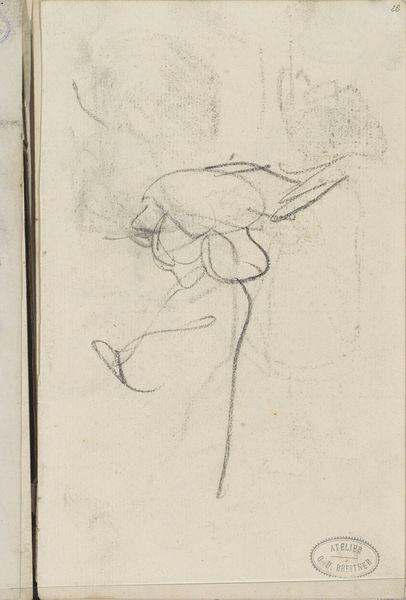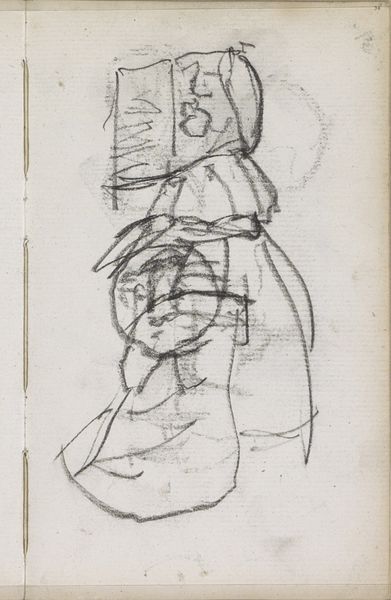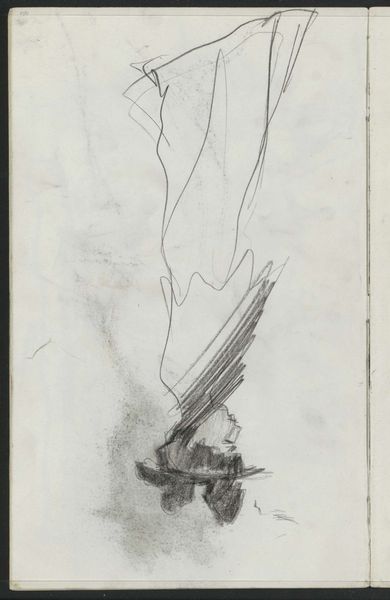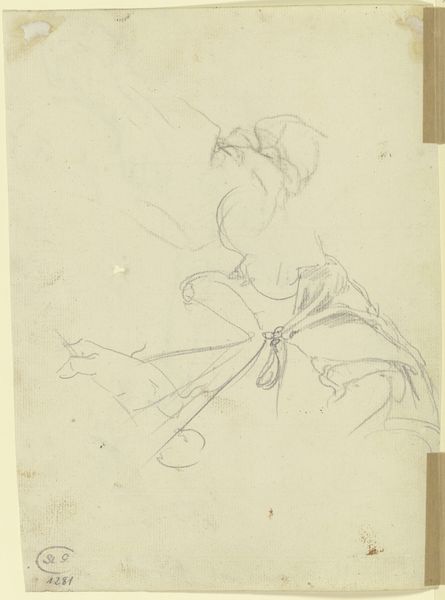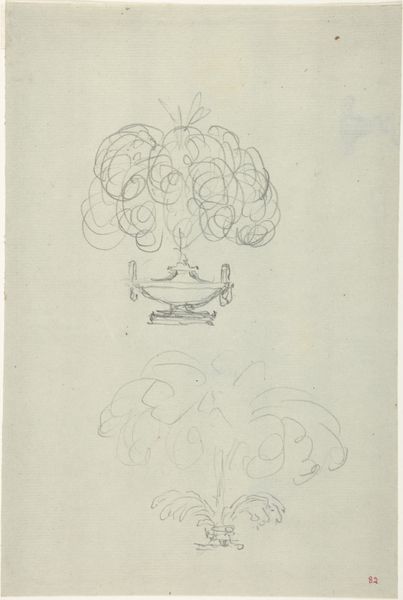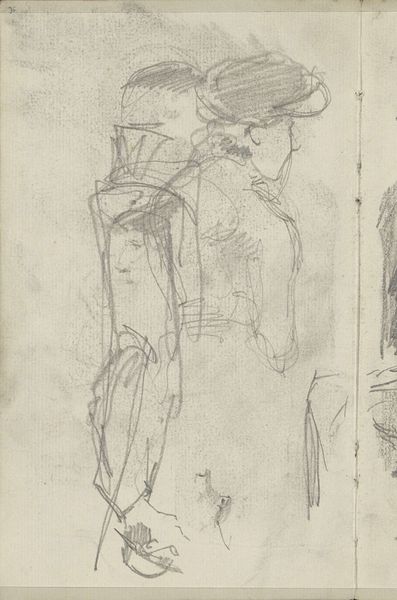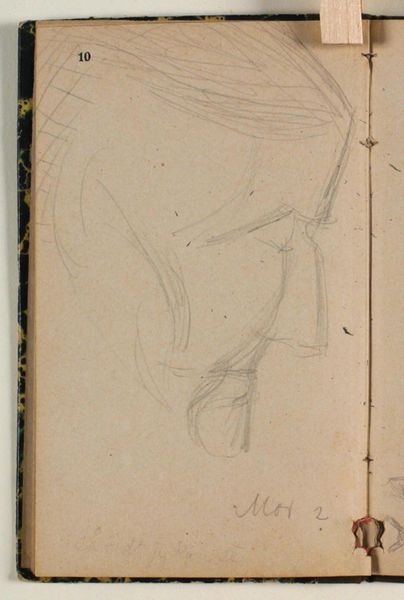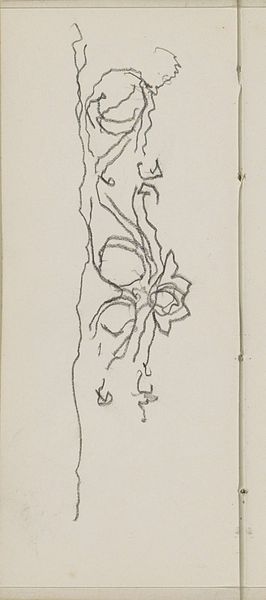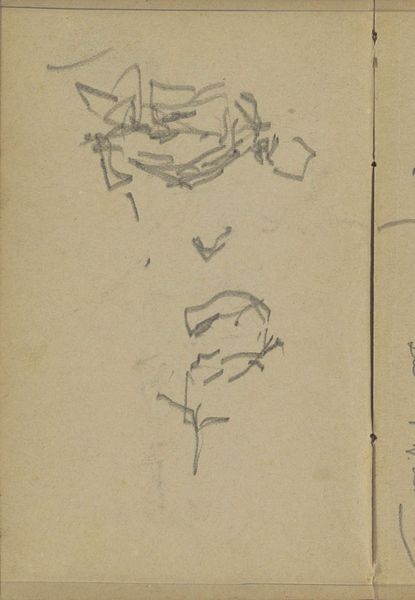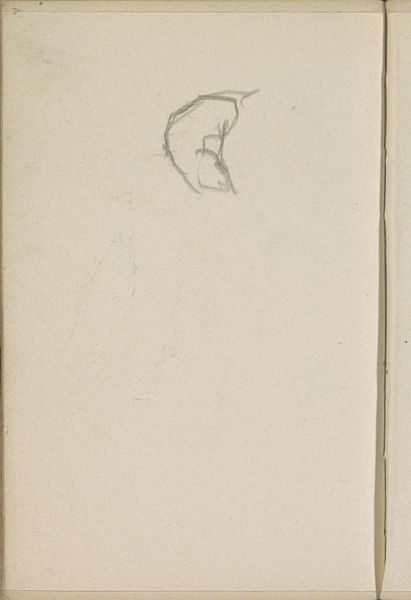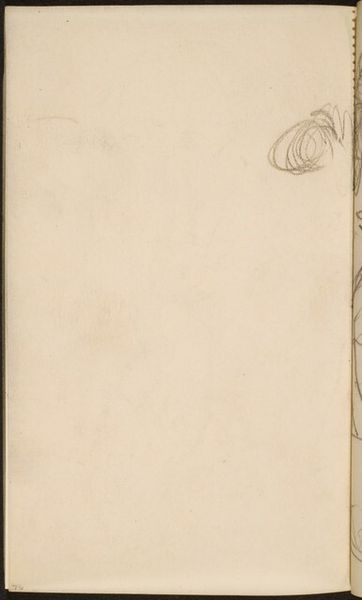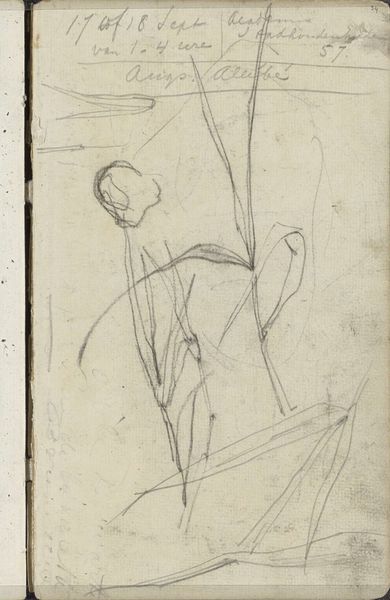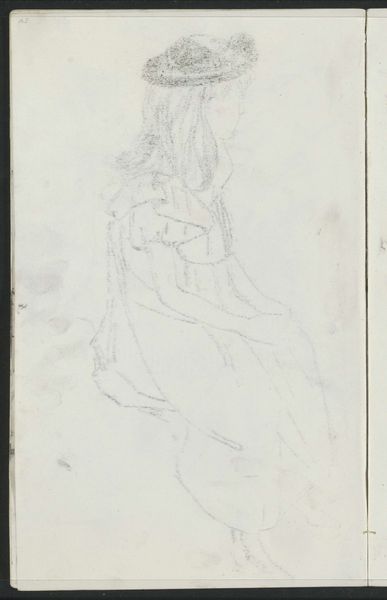
Copyright: Rijks Museum: Open Domain
Curator: This is "Vrouwenhoofd met muts", or "Head of a Woman with a Bonnet," a drawing made with pencil around 1886 to 1934, by Isaac Israels. It is held at the Rijksmuseum. Editor: It’s interesting, almost spectral. The delicate lines feel tentative, as though the artist is searching for the form. What strikes me most is the implied domesticity contrasted with that ethereal quality. Curator: Absolutely. The bonnet itself is heavy with cultural associations. Throughout history, head coverings for women signified a multitude of social positions: piety, modesty, even profession. It could represent belonging or subjugation depending on its particular form and function. Here, the soft rendering softens that potentially harsh reading. Editor: Exactly. The ambiguity is key. Was this a study, a fleeting impression captured in the artist’s notebook? It lacks the assertive declarations of formal portraiture, which to me subverts expectations of the role of women at that time. It avoids romanticizing her, allowing her anonymity. Curator: Indeed. Sketchbooks act like personal storehouses of symbolic ideas. The hasty marks evoke both intimacy and detachment, as if the artist isn't necessarily seeking an accurate representation but documenting an image that intrigues. Editor: Thinking about societal context, perhaps it reflects a growing interest in capturing the everyday experiences of ordinary women, rather than only depicting idealized portraits of the elite. It presents her, unfinished as she may seem, as worthy of artistic consideration. Curator: The work exists at the nexus of the internal and external worlds: the artist's observations of the sitter juxtaposed with how those choices play within the conventions of their time period. This tension enhances our viewing experience now, I believe. Editor: It certainly offers space for contemplating those tensions and appreciating the small gesture of observation embedded in what otherwise may have been an unremarkable interaction, elevating her lived experience, even momentarily. Curator: In the end, this small pencil sketch reverberates far beyond its humble size, demonstrating art’s potent capacity for storytelling through deceptively simple imagery. Editor: A brief encounter, sketched onto paper, becoming a small but significant assertion of presence and artistic interest, speaking volumes across the decades.
Comments
No comments
Be the first to comment and join the conversation on the ultimate creative platform.
